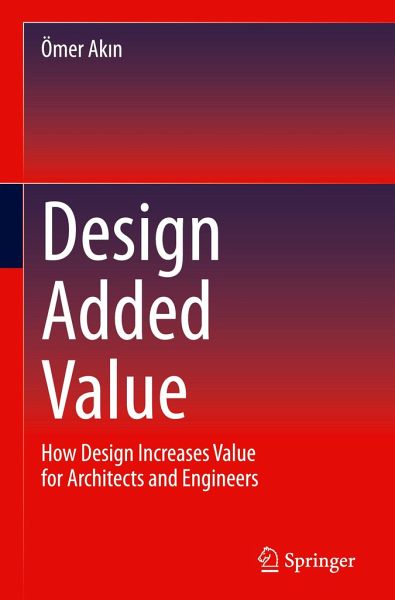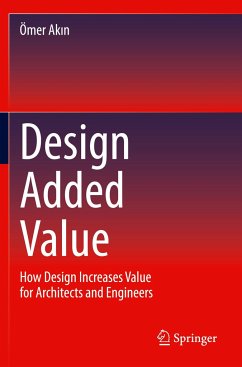
Design Added Value
How Design Increases Value for Architects and Engineers
Versandkostenfrei!
Versandfertig in 6-10 Tagen
113,99 €
inkl. MwSt.
Weitere Ausgaben:

PAYBACK Punkte
57 °P sammeln!
Design has intrinsic, economic value. To make this value tangible, design features of buildings need to be explored, measured, and taken into account when initiating projects and financing their construction. It is as calculable as the extrinsic value of a project. However, we need concepts, strategies, methods, techniques, and tools to do just that.The Value Based Design approach and Design-Added Value (D-AV) methodology in this book enables architects, engineers, contractors and owner-clients of buildings to benefit from extraordinary design and construction features. It explains the rationa...
Design has intrinsic, economic value. To make this value tangible, design features of buildings need to be explored, measured, and taken into account when initiating projects and financing their construction. It is as calculable as the extrinsic value of a project. However, we need concepts, strategies, methods, techniques, and tools to do just that.
The Value Based Design approach and Design-Added Value (D-AV) methodology in this book enables architects, engineers, contractors and owner-clients of buildings to benefit from extraordinary design and construction features. It explains the rationale and motivation for D-AV methodology, outlines and illustrates this methodology with examples, provides complete and detailed examples of how the key analysis techniques work through historical case studies, and describes specific methods used in application of the D-AV methodology, such as Bayesian statistics, cost benefit analysis, pairwise comparison techniques, cognitive walkthroughs, and optimization.
The Value Based Design approach and Design-Added Value (D-AV) methodology in this book enables architects, engineers, contractors and owner-clients of buildings to benefit from extraordinary design and construction features. It explains the rationale and motivation for D-AV methodology, outlines and illustrates this methodology with examples, provides complete and detailed examples of how the key analysis techniques work through historical case studies, and describes specific methods used in application of the D-AV methodology, such as Bayesian statistics, cost benefit analysis, pairwise comparison techniques, cognitive walkthroughs, and optimization.












